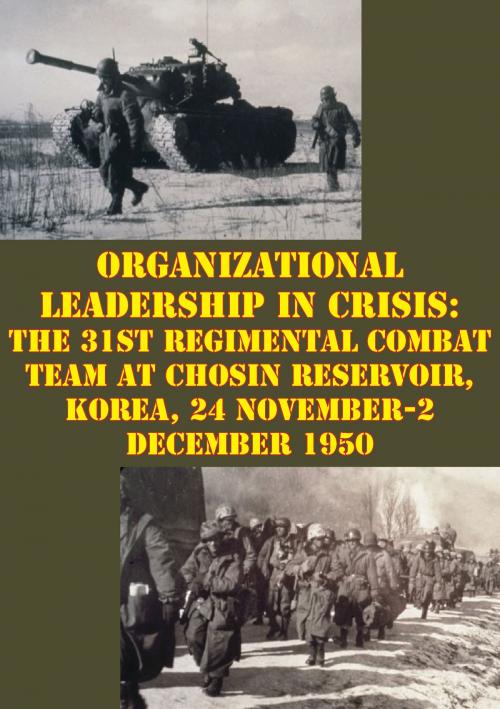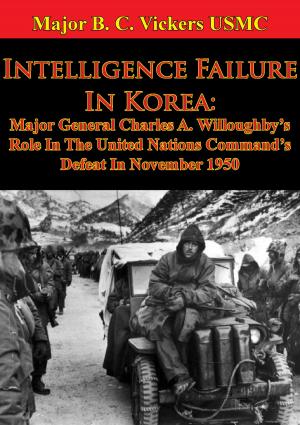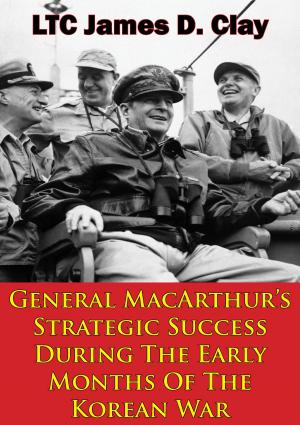Organizational Leadership In Crisis:
The 31st Regimental Combat Team At Chosin Reservoir, Korea, 24 November-2 December 1950
Nonfiction, History, Asian, Korean War, Military, India| Author: | Paul T. Berquist | ISBN: | 9781782899617 |
| Publisher: | Normanby Press | Publication: | November 6, 2015 |
| Imprint: | Normanby Press | Language: | English |
| Author: | Paul T. Berquist |
| ISBN: | 9781782899617 |
| Publisher: | Normanby Press |
| Publication: | November 6, 2015 |
| Imprint: | Normanby Press |
| Language: | English |
The 31st Regimental Combat Team (RCT) was created on 24 November 1950. On 27 November it had the mission of relieving the Marines of the 1st Marine Division East of the Chosin reservoir and attacking to the North towards the Yalu River. The unit’s battalions and separate companies were spread out along the road from the port of Hungnam in the south to forward positions east of the reservoir over 90 miles away when it was hit by the surprise attack of the Chinese 80th Peoples’ Liberation Army (PLA) Division on the evening of 27 November. Organizational leadership failures at the level of the X Corps, 7th Infantry Division, the 31st RCT and its attached battalions all contributed to the almost complete destruction of the RCT by the evening of 1-2 December 1950. These failures led to a very poor situational awareness prior to the Chinese attack and helped create the total breakdown of organizational cohesion and effectiveness that occurred during the unit’s ill-fated attempt to breakout of the Chinese encirclement. This thesis shows how decisions that are made at the organizational level are critical to the success of the unit.
The 31st Regimental Combat Team (RCT) was created on 24 November 1950. On 27 November it had the mission of relieving the Marines of the 1st Marine Division East of the Chosin reservoir and attacking to the North towards the Yalu River. The unit’s battalions and separate companies were spread out along the road from the port of Hungnam in the south to forward positions east of the reservoir over 90 miles away when it was hit by the surprise attack of the Chinese 80th Peoples’ Liberation Army (PLA) Division on the evening of 27 November. Organizational leadership failures at the level of the X Corps, 7th Infantry Division, the 31st RCT and its attached battalions all contributed to the almost complete destruction of the RCT by the evening of 1-2 December 1950. These failures led to a very poor situational awareness prior to the Chinese attack and helped create the total breakdown of organizational cohesion and effectiveness that occurred during the unit’s ill-fated attempt to breakout of the Chinese encirclement. This thesis shows how decisions that are made at the organizational level are critical to the success of the unit.



![Cover of the book A Narrative of The Siege Of Delhi with an Account of The Mutiny at Ferozepore in 1857 [Illustrated Edition] by Paul T. Berquist](https://www.kuoky.com/images/2016/july/300x300/9781786259622-jIa9_300x.jpg)



![Cover of the book Vietnam Studies - Mounted Combat In Vietnam [Illustrated Edition] by Paul T. Berquist](https://www.kuoky.com/images/2014/august/300x300/9781782893660-ok4D_300x.jpg)







